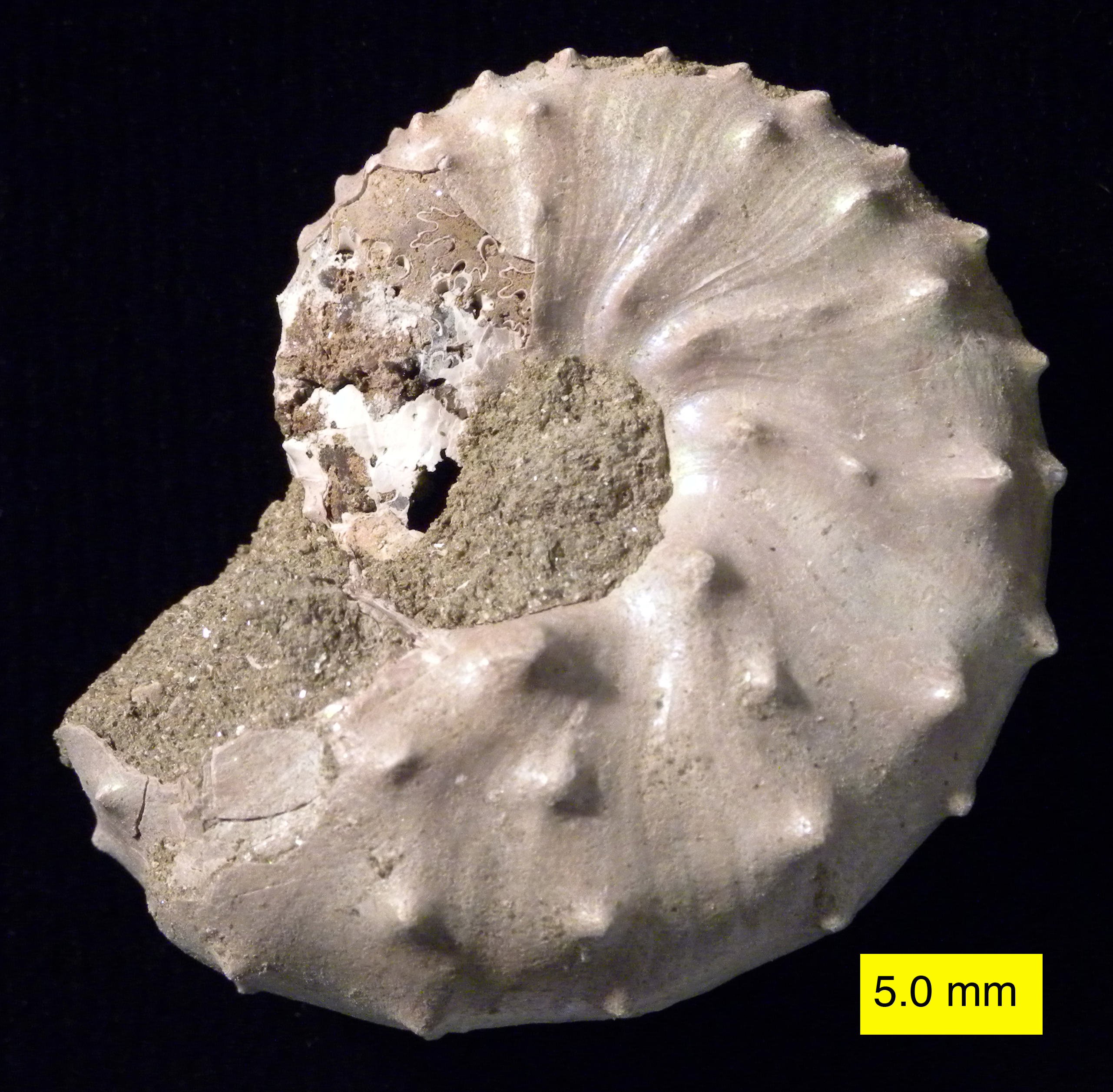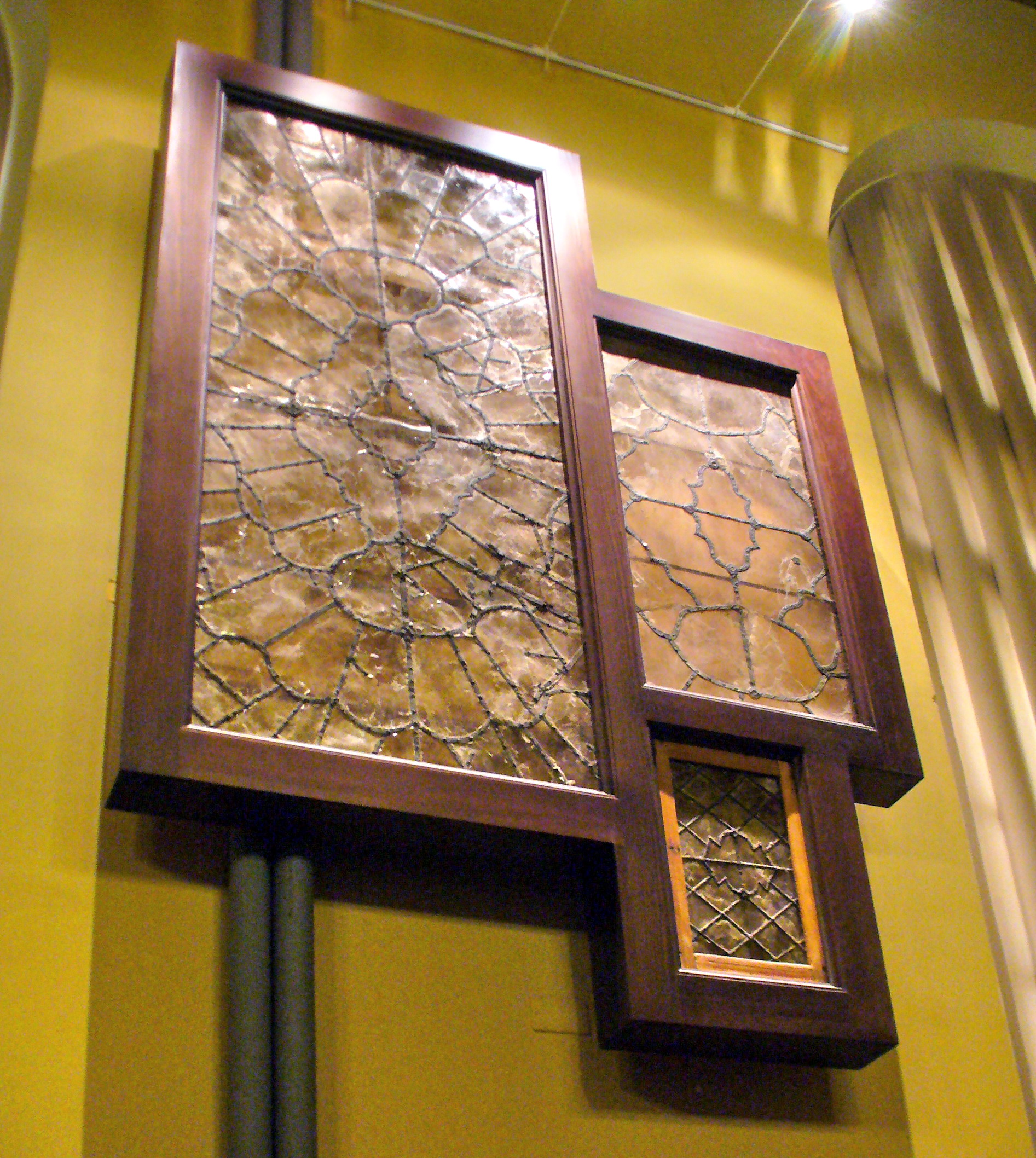|
Argon–argon Dating
Argon–argon (or 40Ar/39Ar) dating is a radiometric dating method invented to supersede potassiumargon (K/Ar) dating in accuracy. The older method required splitting samples into two for separate potassium and argon measurements, while the newer method requires only one rock fragment or mineral grain and uses a single measurement of argon isotopes. 40Ar/39Ar dating relies on neutron irradiation from a nuclear reactor to convert a stable form of potassium (39K) into the radioactive 39Ar. As long as a standard of known age is co-irradiated with unknown samples, it is possible to use a single measurement of argon isotopes to calculate the 40K/40Ar* ratio, and thus to calculate the age of the unknown sample. 40Ar* refers to the radiogenic 40Ar, i.e. the 40Ar produced from radioactive decay of 40K. 40Ar* does not include atmospheric argon adsorbed to the surface or inherited through diffusion and its calculated value is derived from measuring the 36Ar (which is assumed to be of atmosph ... [...More Info...] [...Related Items...] OR: [Wikipedia] [Google] [Baidu] |
Radiometric Dating
Radiometric dating, radioactive dating or radioisotope dating is a technique which is used to date materials such as rocks or carbon, in which trace radioactive impurities were selectively incorporated when they were formed. The method compares the abundance of a naturally occurring radioactive isotope within the material to the abundance of its decay products, which form at a known constant rate of decay. The use of radiometric dating was first published in 1907 by Bertram Boltwood and is now the principal source of information about the absolute age of rocks and other geological features, including the age of fossilized life forms or the age of Earth itself, and can also be used to date a wide range of natural and man-made materials. Together with stratigraphic principles, radiometric dating methods are used in geochronology to establish the geologic time scale. Among the best-known techniques are radiocarbon dating, potassium–argon dating and uranium–lead dating. ... [...More Info...] [...Related Items...] OR: [Wikipedia] [Google] [Baidu] |
Closure Temperature
In radiometric dating, closure temperature or blocking temperature refers to the temperature of a system, such as a mineral, at the time given by its radiometric date. In physical terms, the closure temperature is the temperature at which a system has cooled so that there is no longer any significant diffusion of the parent or daughter isotopes out of the system and into the external environment. The concept's initial mathematical formulation was presented in a seminal paper by Martin H. Dodson, "Closure temperature in cooling geochronological and petrological systems" in the journal '' Contributions to Mineralogy and Petrology'', 1973, with refinements to a usable experimental formulation by other scientists in later years. This temperature varies broadly among different minerals and also differs depending on the parent and daughter atoms being considered.''Earth: a Portrait of a Planet'Glossary W.W. Norton & Company It is specific to a particular material and isotopic system. ... [...More Info...] [...Related Items...] OR: [Wikipedia] [Google] [Baidu] |
UC Berkeley
The University of California, Berkeley (UC Berkeley, Berkeley, Cal, or California) is a public university, public land-grant university, land-grant research university in Berkeley, California. Established in 1868 as the University of California, it is the state's first land-grant university and the founding campus of the University of California system. Its fourteen colleges and schools offer over 350 degree programs and enroll some 31,800 undergraduate and 13,200 graduate students. Berkeley ranks among the world's top universities. A founding member of the Association of American Universities, Berkeley hosts many leading research institutes dedicated to science, engineering, and mathematics. The university founded and maintains close relationships with three United States Department of Energy National Laboratories, national laboratories at Lawrence Berkeley National Laboratory, Berkeley, Lawrence Livermore National Laboratory, Livermore and Los Alamos National Laboratory, Los ... [...More Info...] [...Related Items...] OR: [Wikipedia] [Google] [Baidu] |
Berkeley Geochronology Center
The Berkeley Geochronology Center (BGC) is a non-profit geochronology research institute in Berkeley, California. It was originally a research group in the laboratory of geochronologist Garniss Curtis at the University of California, Berkeley. The center is now an independent scientific research institute with close Berkeley affiliations and directed by geologist and geochronologist Paul Renne, a professor in residence in the department of earth and planetary science at Berkeley. History In 1985, Curtis, set to retire in 1989, moved the group from his lab at the university to the basement of the independent Institute for Human Origins (IHO), at the suggestion of American anthropologist F. Clark Howell. The geochronologists worked separately from the IHO, although IHO contained their bureaucratic infrastructure, until 1989 when they became officially known as the Institute for Human Origins Geochronology Center. In 1994 the group officially split from the IHO based on diffe ... [...More Info...] [...Related Items...] OR: [Wikipedia] [Google] [Baidu] |
Grenville Turner
Grenville Turner (born 1 November 1936, in Todmorden) is a research professor at the University of Manchester. He is one of the pioneers of cosmochemistry. Education * Todmorden Grammar School * St. John's College, Cambridge (MA) * Balliol College, Oxford In 1962, he was awarded his D.Phil. (Oxford University's equivalent of a PhD) in nuclear physics. Career * University of California, Berkeley: assistant professor, 1962–64 * University of Sheffield: lecturer in physics, 1964–74, senior lecturer 1974–79, reader 1979–80, professor 1980–88 * Caltech: research associate, 1970–71 * University of Manchester: professor of isotope geochemistry, Department of Earth Sciences, 1988– * Member of committees for SERC, the British National Space Centre and PPARC Scientific work Professor Turner has been a leading figure in cosmochemistry since the 1960s. His pioneering work on rare gases in meteorites led him to develop the argon–argon dating technique that demonstra ... [...More Info...] [...Related Items...] OR: [Wikipedia] [Google] [Baidu] |
Cretaceous–Paleogene Extinction Event
The Cretaceous–Paleogene (K–Pg) extinction event (also known as the Cretaceous–Tertiary extinction) was a sudden extinction event, mass extinction of three-quarters of the plant and animal species on Earth, approximately 66 million years ago. With the exception of some ectothermic species such as sea turtles and crocodilians, no tetrapods weighing more than survived. It marked the end of the Cretaceous Period, and with it the Mesozoic era, while heralding the beginning of the Cenozoic era, which continues to this day. In the geologic record, the K–Pg event is marked by a thin layer of sediment called the Cretaceous–Paleogene boundary, K–Pg boundary, which can be found throughout the world in marine and terrestrial rocks. The boundary clay shows unusually high levels of the metal iridium, which is more common in asteroids than in the Earth's crust. As originally proposed in 1980 by a team of scientists led by Luis Walter Alvarez, Luis Alvarez and his son Walter ... [...More Info...] [...Related Items...] OR: [Wikipedia] [Google] [Baidu] |
Hornblende
Hornblende is a complex inosilicate series of minerals. It is not a recognized mineral in its own right, but the name is used as a general or field term, to refer to a dark amphibole. Hornblende minerals are common in igneous and metamorphic rocks. The general formula is . Physical properties Hornblende has a hardness of 5–6, a specific gravity of 3.0 to 3.6, and is typically an opaque green, dark green, brown, or black color. It tends to form slender prismatic to bladed crystals, diamond-shaped in cross-section, or is present as irregular grains or fibrous masses. Its planes of cleavage intersect at 56° and 124° angles. Hornblende is most often confused with the pyroxene series and biotite mica, which are also dark minerals found in granite and charnockite. Pyroxenes differ in their cleavage planes, which intersect at 87° and 93°. Hornblende is an inosilicate (chain silicate) mineral, built around double chains of silica tetrahedra. These chains extend the length ... [...More Info...] [...Related Items...] OR: [Wikipedia] [Google] [Baidu] |
Muscovite
Muscovite (also known as common mica, isinglass, or potash mica) is a hydrated phyllosilicate mineral of aluminium and potassium with formula K Al2(Al Si3 O10)( F,O H)2, or ( KF)2( Al2O3)3( SiO2)6( H2O). It has a highly perfect basal cleavage yielding remarkably thin laminae (sheets) which are often highly elastic. Sheets of muscovite 5 meters × 3 meters (16.5 feet × 10 feet) have been found in Nellore, India. Muscovite has a Mohs hardness of 2–2.25 parallel to the 01face, 4 perpendicular to the 01and a specific gravity of 2.76–3. It can be colorless or tinted through grays, browns, greens, yellows, or (rarely) violet or red, and can be transparent or translucent. It is anisotropic and has high birefringence. Its crystal system is monoclinic. The green, chromium-rich variety is called fuchsite; mariposite is also a chromium-rich type of muscovite. Muscovite is the most common mica, found in granites, pegmatites, gneisses, and schists, and as a contact metamorphic roc ... [...More Info...] [...Related Items...] OR: [Wikipedia] [Google] [Baidu] |
Biotite
Biotite is a common group of phyllosilicate minerals within the mica group, with the approximate chemical formula . It is primarily a solid-solution series between the iron- endmember annite, and the magnesium-endmember phlogopite; more aluminous end-members include siderophyllite and eastonite. Biotite was regarded as a mineral ''species'' by the International Mineralogical Association until 1998, when its status was changed to a mineral ''group''. The term ''biotite'' is still used to describe unanalysed dark micas in the field. Biotite was named by J.F.L. Hausmann in 1847 in honor of the French physicist Jean-Baptiste Biot, who performed early research into the many optical properties of mica. Members of the biotite group are sheet silicates. Iron, magnesium, aluminium, silicon, oxygen, and hydrogen form sheets that are weakly bound together by potassium ions. The term "iron mica" is sometimes used for iron-rich biotite, but the term also refers to a flaky micaceou ... [...More Info...] [...Related Items...] OR: [Wikipedia] [Google] [Baidu] |
Geologic Fault
In geology, a fault is a planar fracture or discontinuity in a volume of rock across which there has been significant displacement as a result of rock-mass movements. Large faults within Earth's crust result from the action of plate tectonic forces, with the largest forming the boundaries between the plates, such as the megathrust faults of subduction zones or transform faults. Energy release associated with rapid movement on active faults is the cause of most earthquakes. Faults may also displace slowly, by aseismic creep. A ''fault plane'' is the plane that represents the fracture surface of a fault. A '' fault trace'' or ''fault line'' is a place where the fault can be seen or mapped on the surface. A fault trace is also the line commonly plotted on geologic maps to represent a fault. A ''fault zone'' is a cluster of parallel faults. However, the term is also used for the zone of crushed rock along a single fault. Prolonged motion along closely spaced faults can bl ... [...More Info...] [...Related Items...] OR: [Wikipedia] [Google] [Baidu] |
Granite
Granite () is a coarse-grained ( phaneritic) intrusive igneous rock composed mostly of quartz, alkali feldspar, and plagioclase. It forms from magma with a high content of silica and alkali metal oxides that slowly cools and solidifies underground. It is common in the continental crust of Earth, where it is found in igneous intrusions. These range in size from dikes only a few centimeters across to batholiths exposed over hundreds of square kilometers. Granite is typical of a larger family of ''granitic rocks'', or '' granitoids'', that are composed mostly of coarse-grained quartz and feldspars in varying proportions. These rocks are classified by the relative percentages of quartz, alkali feldspar, and plagioclase (the QAPF classification), with true granite representing granitic rocks rich in quartz and alkali feldspar. Most granitic rocks also contain mica or amphibole minerals, though a few (known as leucogranites) contain almost no dark minerals. Granite is ... [...More Info...] [...Related Items...] OR: [Wikipedia] [Google] [Baidu] |





